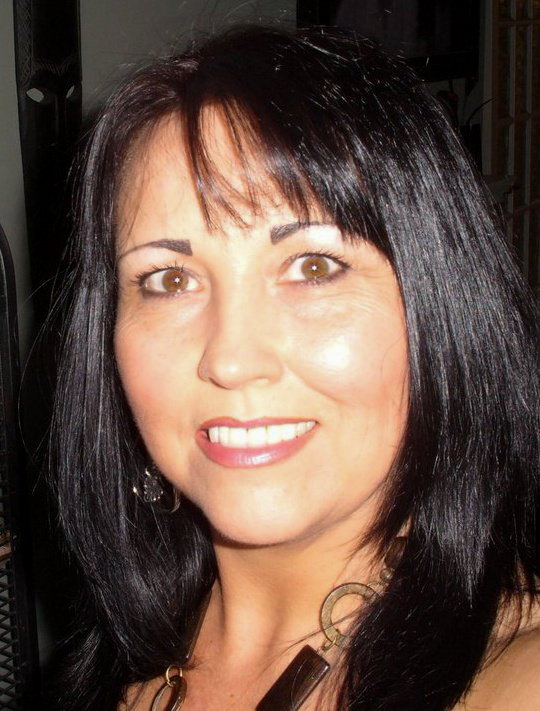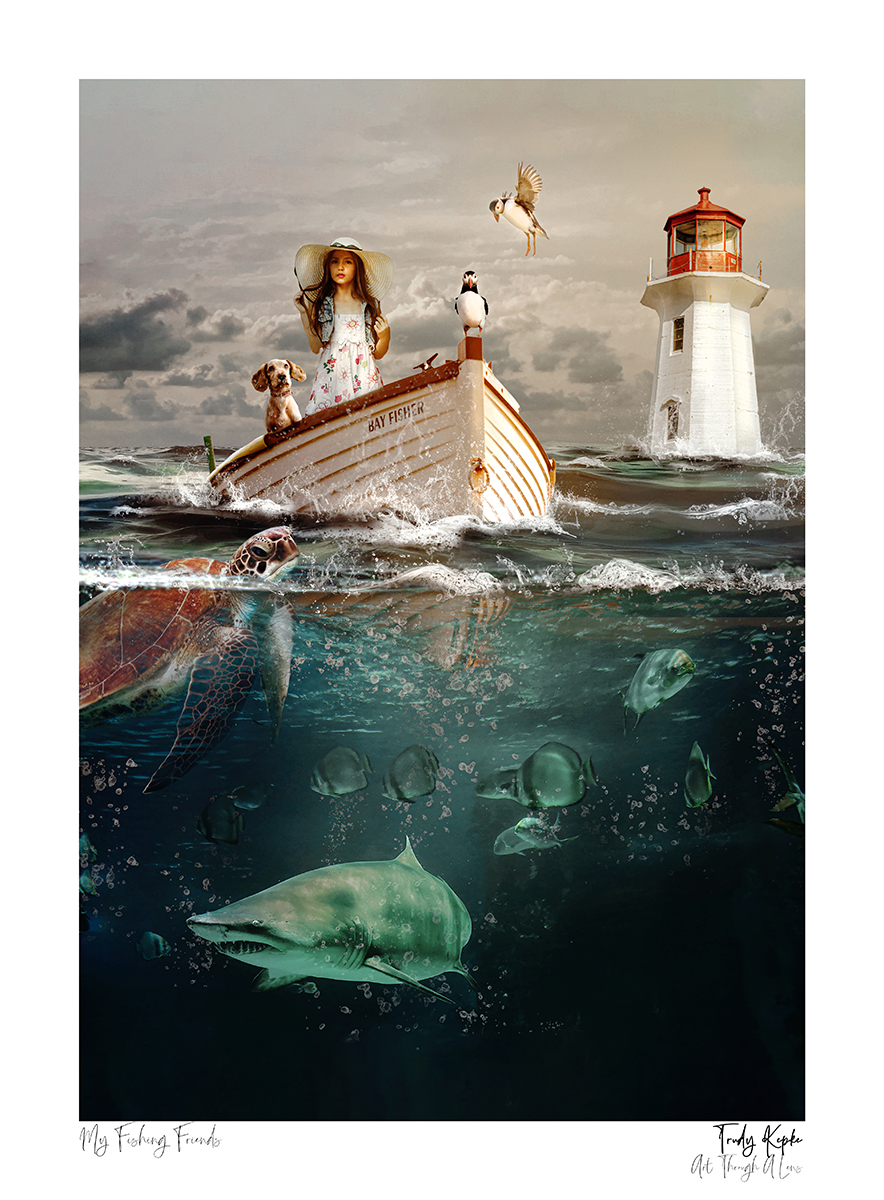This entry was posted on July 13, 2020.
Trudy Kepke first realised her creative side through painting in watercolour and acrylics. Since then Trudy has taken up photography which allowed her to go out into the countryside and capture beautiful images however, Trudy often found something was missing with the photographs she had taken, they needed Trudy’s own interpretation adding to them.

Trudy Kepke
Trudy started making composites out of her photographs. Composite photography is simply the blending of two or more images to create one final image. While this definition makes compositing sound quick and easy, it is anything but, often requiring several hours of photography and photoshop work to complete the final piece.
Trudy takes photographs of textures and colours, blending colours together to apply over her photograph to make them appear more painterly. Learning in this way taught her how to use the camera better but it also taught Trudy about composition, colour, light, and how to treat photography like art.
Instead of taking an image Trudy is creating an image offering her very unique view and style. The results are stunning. We spoke to Trudy about her work that she enjoys so much.

From school age I studied Art and Design, I used to paint my own pictures on canvas and had my artwork licensed. Acrylics and watercolour was my preferred medium. However, due to working full time in Retail, I never really had the time to keep painting, so I started with a camera in 2015. My first DSLR camera was a Nikon D300. It was a second hand camera, and I joined an online photography course to be able to understand how one works. At first I was happy to just look at a photograph that I had taken, however, my creativity was bubbling and I soon started to feel that something was missing.
I started to create composites from my photographs, which entailed adding photographs of textures and colours and applying them over my photographs in Photoshop. I wanted them to appear more painterly and make people wonder how these were made. I settled on landscape photography through trial and error really. I’m mostly self-taught so over time I’ve spent hours photographing everything from animals to abstracts to people but I always came back to landscape. When I’m taking pictures of the countryside I feel fulfilled and happy so I’ve followed that feeling all along.
Photography is fantastic and I would be lost without my camera. It gets everyone out into the great outdoors and your eyes are scanning the landscape for an image. Photography for me, pauses that moment in time, making memories for yourself and others to enjoy and learn from. I am very much guided by my gut instinct when composing a picture. Often I’ll position a key part of the picture in one third of the frame but that’s not because I’m ticking off a mental list of compositional ‘must dos’, it’s because it feels right to me to make that picture work. One thing I am conscious of is thinking creatively, so I do consciously try to compose images in a way that you wouldn’t expect, to put my stamp on the picture and to make the viewer think a little about what I’m showing them.

The camera I use at the moment is a Nikon D7500, I love Nikon cameras as I find them easy to use. You don’t need the most expensive piece of equipment if you have a good eye for a composition. I have a few lenses and it all depends on what image I am trying to achieve on the day, I use my Nikon 18-140mm lens quite a lot at the moment as it gives me a wide range, I do also love my Sigma 150-500mm lens too, which enables me to zoom in and compress photos that are far away and make them appear a lot nearer to you.
I am always inspired by something, and at present I have been making surreal images in PS from photographs and stock images which I find really enjoyable as your imagination can go wild. With composites, you're quite lucky really as you can take an image of say a beach for eg, with a dull sky no detail, and you apply your colours and layers to that image and you’ve created something different, given the dull picture something more colourful and pleasant to look at. It’s creating art but from a photograph that you have taken, and that’s why I love it so much.
I do a lot of my work in the studio, as compositing can take a few hours to perfect for an image. I love going somewhere different though with your camera or going to the lakes or Scotland to view their glorious fells/mountains.
I never plan anything, I venture out and see what I can see that interests me, or what I can vision if I apply my textures layers over them. For My PS creations, I just look through images and stock images and try and come up with a theme that would interest people commercially. I have been told I could be an illustrator. So that may be my next adventure.

The most memorable photoshoot for me was going to find Warnscale Head Bothy in the lakes, walking up Honister Pass and passing Dubs Hut. We had checked the weather report and it was going to be thunderstorms and heavy rain in the afternoon so planned on getting back before the rain set in. It took us hours to find Warnscale Bothy as it was hidden in its surroundings of slate. Once we did, we took just a couple of photographs, and started panicking we would get lost up there as we couldn’t find the way we had come in! It was quite scary and the rain had started by now too. We loved the view and the bothy but we always talk about the time we nearly got lost on the fells. You have to be very careful. However, I loved my photograph that I took.
Photography started out as a hobby for me, but I am now a paid professional. I sell my artwork online, and in shops, and I sell my composites online and in shops too. I have my own website called Art Through A Lens and I also have my own stall at Tynemouth Market in the north east at weekends and that gives me a great buzz.
If I were to give any advice to aspiring professionals it would be to never give up. If you keep some of your old photographs and look back at those, you will see the improvement that you’ve made over time. Think commercially, what are people going to be interested in to have on their wall. Watch Youtube videos on anything that interests you to gain more knowledge and skills. But always enjoy your photography, it is about what inspires yourself and motivates you to get out there and capture the shot.
To follow Trudy and find out more about her work check out her digital homes on Facebook, Instagram and Twitter as well as her page for bespoke images featuring either yourself or a child







1 Comment